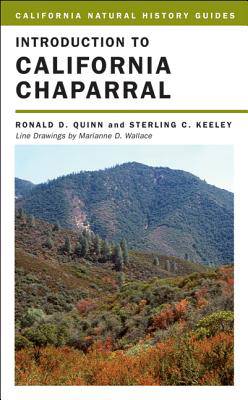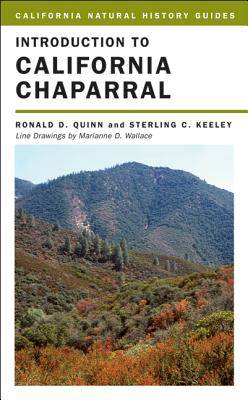
- Afhalen na 1 uur in een winkel met voorraad
- Gratis thuislevering in België vanaf € 30
- Ruim aanbod met 7 miljoen producten
- Afhalen na 1 uur in een winkel met voorraad
- Gratis thuislevering in België vanaf € 30
- Ruim aanbod met 7 miljoen producten
Zoeken
Omschrijving
The characteristic look of California Chaparral--a soft bluish-green blanket of vegetation gently covering the hills--is known to millions who have seen it as the backdrop in movies and television productions. This complex ecological community of plants and animals is not just a feature of the hills around Hollywood, but is a quintessential part of the entire California landscape. It is a highly resilient community adapted to life with recurring fires and droughts. Written for a wide audience, this concise, engaging, and beautifully illustrated book describes an ancient and exquisitely balanced environment home to wondrous organisms: Fire Beetles that mate only on burning branches, lizards that shoot blood from their eyes when threatened, Kangaroo Rats that never drink water, and seeds that germinate only after a fire, even if that means waiting in the soil for a 100 years or more. Useful both as a field guide and an introductory overview of the ecology of chaparral, it also provides a better understanding of how we might live in harmony, safety, and appreciation of this unique ecological community.
* Identifies chaparral's common plants, animals, birds, reptiles, amphibians, and insects
* Features 79 color illustrations, 56 black-and-white photographs, and 3 maps
* Examines the role of humans and fire in chaparral, covering the placement and design of homes, landscaping, and public policy
* Identifies chaparral's common plants, animals, birds, reptiles, amphibians, and insects
* Features 79 color illustrations, 56 black-and-white photographs, and 3 maps
* Examines the role of humans and fire in chaparral, covering the placement and design of homes, landscaping, and public policy
Specificaties
Betrokkenen
- Auteur(s):
- Illustrator(s):
- Uitgeverij:
Inhoud
- Aantal bladzijden:
- 344
- Taal:
- Engels
- Reeks:
- Reeksnummer:
- nr. 90
Eigenschappen
- Productcode (EAN):
- 9780520245662
- Verschijningsdatum:
- 20/09/2006
- Uitvoering:
- Paperback
- Formaat:
- Trade paperback (VS)
- Afmetingen:
- 116 mm x 181 mm
- Gewicht:
- 485 g

Alleen bij Standaard Boekhandel
+ 71 punten op je klantenkaart van Standaard Boekhandel
Beoordelingen
We publiceren alleen reviews die voldoen aan de voorwaarden voor reviews. Bekijk onze voorwaarden voor reviews.











